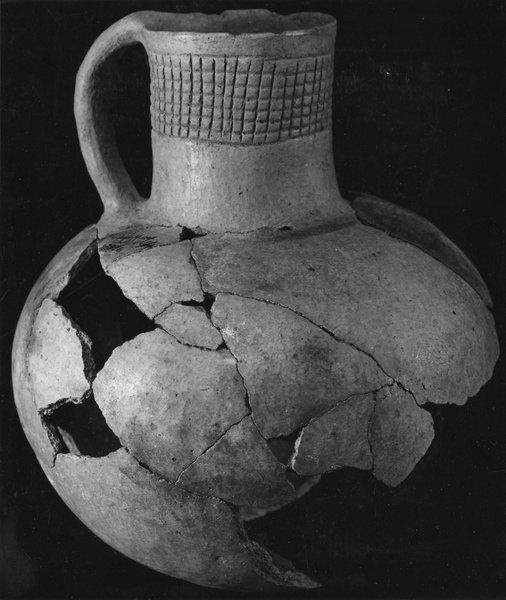Dublin Core
Title
Description
Buried under the Willard Bay reservoir on the northeast end of Great Salt Lake is not one but two human settlements. Beneath 99,000-acres of water is a historic Fremont village as well as a Mormon town, giving evidence that certain geographies naturally encouraged the growth of community across human history in Utah.
Before being drowned by the construction of a dam in the 1950’s, the area around Willard Creek on the eastern shore of Great Salt Lake was a temperate world perfect for human settlement. The “lake effect” weather that causes mild winters on the lake’s east coast was ideal for farming, with grasslands and streambeds easily diverted for irrigation. Hunting for birds and animals drawn to the water was easy, so it makes sense that two human settlements flourished there centuries apart.
When Mormons first settled Willard Creek in 1853, they had no idea that a Fremont town just as large as their own lay beneath them. They started to find clues -- pots, arrow heads, and other artifacts -- as well as 70 earthen mounds in the area. The Fremont peoples indigenous to Utah were known for their farming expertise along the Wasatch Front, and the settlement buried at Willard was one of the largest. There was a large circular mud wall around the village with a two-mile circumference, as well as both round and square pit houses implying a shift in Fremont housing design around the 12th century.
Unfortunately, archaeological looting and other construction leveled all the remaining Fremont archeological sites. The final blow to the area came in 1950 when the Willard Bay Reservoir was built, providing irrigation, drinking water, and one of the state’s most popular recreational marinas to the surrounding population. Construction of the reservoir required using the ground as fill for the dikes, and in the process some construction workers reported at least 20 human bodies, likely Fremont people, were unearthed. How many more were lost or moved in the creation of the dam is unknown.
Creator
Source
_______________
See Mark E. Stuart, “Sidebar: The Big Village at Willard,” in Ancient Peoples of the Great Basin and Colorado Plateau by Steven Simms (Walnut Creek, CA: Left Coast Press, 2008).

